Home / Past Newsletters / September 2013
September 2013
First, some new products... then soapmaking!
Making a batch of cold-process soap is so satisfying that we've made it the theme of this newsletter.
In this issue:
New products
Something for everyone here!
Cosmetic grade essential oils: Made by adding isolates from cheaper plants to the essential oil, these are really nice - and 100% natural. A cost-effective source of five much-loved aromas: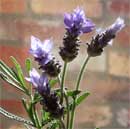
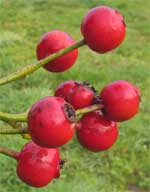
Rosehip oil: We have a third option for you: a cold-pressed, refined oil from Chile. This is a light-coloured oil with no odour, a lower priced option than our organic cold-pressed rosehip oils.
Bath bombs: Enthusiasts, we have what you need! A plastic mould, recipes, and now baking soda! (We've also got the other main ingredient, citric acid.)
Make the most of these last wet evenings by soaking away stress and tension in a scented bath - or start on those Christmas presents...
NZ natural stone exfoliant: Approved for use in skincare, this is ground from natural New Zealand volcanic rock, and is mainly pumice and silica.
...and here it is in a soap recipe...
Recipe: Lemon Gardener's Soap
240g RBD coconut oil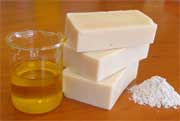
240g organic palm oil
240g pomace olive oil
104g sodium hydroxide
240g water
20g NZ natural stone
20g lemon essential oil
Method
See the instructions on our website.
 September special
September special
Soapmaking success is at your fingertips with our Basic CP Soapmaking Kit, reduced by $10 for this month only. All ingredients, long-lasting silicon mould, full instructions - it's all there! Choose between lavender, lemon, rose geranium and unfragranced.
Making your own soap
Cold-process soap is wonderful stuff, and can turn every shower or bath into a sensual delight that leaves your skin clean, soft and contented. There’s nothing like it!
By making your own, you can choose the perfume and control properties such as lather and conditioning effect.
Handmade soap is a different thing from supermarket soap. Pure vegetable oils are transformed by sodium hydroxide into the solid substance that is cold-process soap – no fillers, animal fats or other cheap and nasty stuff.
Problem skin is usually very happy to be cleansed with handmade soap. All the anti-soap propaganda is just that – creating a marketing opportunity for soap-free (petroleum-based?) cleansers.
Haven’t made soap before?
A great way to begin is our basic cold-process (CP) kit, reduced by $10 this month. This could be followed by a kit such as Bentonite and Lime – two extra things to add – the timing is crucial! Then you’d have two loaf moulds (the best way of making CP soap) and you’re ready to start buying ingredients and making family-sized batches!
The other day we photographed the making of our latest batch – have a look before you launch in on your first lot. If you’re using a kit, the amount will be half what’s shown in the photos.
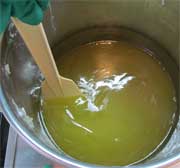
Confident at handling and weighing chemicals,
and ready to go it alone?
Read Elinor’s instructions on our website!
Also check that you have the necessary basic equipment.
… and choose from Elinor’s recipes for goats milk soap, lavender soap, no-palm soap and vegan soap.
Experienced and feeling creative?
If you’re well versed in the basics of making soap and want to do some designer stuff, read on!
There is vital information on our website, where you can benefit from Elinor's years of soapmaking experience.
And.. we have a new lye calculator for making cold-process (CP) soap from the oils we stock.
Creating a CP soap recipe requires not only a lye calculator, but also info about the fatty acid composition of each oil.
When you construct a CP bar, you’re likely to want a combination of oils that will
Creating a recipe
Every vegetable oil has a distinctive fatty acid profile, and each has its benefits for making CP soap.
But make sure the backbone of your bar is tried and true. Go Native’s basic soap recipe contains
1/3 coconut oil – a saturated oil high in lauric and myristic acids
1/3 palm oil – Go Native’s palm oil is organically grown and sustainably produced
1/3 olive oil – pomace is cheapest, and paradoxically is great for soapmaking
Change just one thing at a time, so you know what’s going on. For example, if you want to produce a soap bar that’s not too soft with good lather, replace part of the olive oil with something else.
With every change remember to check the lye calculator to make sure you have the sodium hydroxide and water percentages correct.
Many oils that are nourishing when applied directly to the skin (such as jojoba, kiwiseed and borage) lack a conditioning effect in soap, and need to be balanced with an oil that provides this. Castor oil would be a good choice.
Fatty acid profiles for soap oils
Below is a table of oils, with the amounts of the fatty acids important for soapmaking, to help you create a combination of oils with the properties you seek.
Some oils stand out for their special qualities in soap (** in the table), and a few stand out because of their unusual fatty acid profiles (+ in the table).
Coconut oil ** and +
This has between 44% and 52% lauric acid and 15-25% myristic acid, both of which make a hard bar that is good for cleaning and has a great lather. But it’s low on the conditioning fatty acids, so a soap bar made only with coconut oil tends to dry the skin.
Palm oil **
This is also a very useful basic oil for soap, with its high palmitic acid content helping to give a hard bar with a stable lather, and 35-45% oleic acid giving it conditioning qualities.
Olive oil **
Soap made with just olive oil (called castile soap) has been a luxury item for millennia. It’s great for conditioning, as it’s high in oleic acid. But it’s only medium in iodine, which means it’s only medium for hardness. An olive-oil-only soap disappears quickly because of its softness, and has almost no lather.
Castor oil ** and +
The only oil with ricinoleic acid, which gives a wonderful conditioning effect. It is 80-90% ricinoleic acid. This also helps give a fluffy, stable lather – but too much will give you a sticky, soft soap.
Meadowfoam oil +
This is mainly three unusual fatty acids: 13% erucic, 18% brassic, and 62% gadoleic.
Pomegranate seed oil +
Pomegranate oil is nearly 80% punicic acid, which is named after the pomegranate - punica - and is a valuable skincare oil.
# Iodine Value is a measure of the saturation of an oil or fat (how many centigrams of iodine can be dissolved in a gram of oil or fat). Saturated fats have low iodine values, and unsaturated fats have high iodine values. In general, oils with low iodine values make harder soaps and oils with high iodine values make softer soaps.
Under 50: low
51 -100: medium
101 - 125: medium high
Over 125: high
Note that there are a few oils that are extremely high (blackcurrant, hempseed, kiwiseed, rosehip) or extremely low (coconut).
The SAP value of an oil tells you how much sodium hydroxide is needed for saponification.
These values are built into our lye calculator - enter the amount of each oil, and it will calculate the amount of sodium hydroxide required.
Fragrance
Both essential oils and fragrance oils can give wonderful-smelling soap. It takes more than you'd use for the same volume of moisturiser - as a rule of thumb we use 20ml per kg, but you can use more if you like.
A word of warning: Some oils react when added at trace, and the soap "seizes" - sets very quickly indeed! Read more on our blog (you may have to scroll down).
Here's an interesting recipe to try, or to stimulate your imagination!
This is a very masculine smelling soap, not everyone's cup of tea, but our family likes it.
We also like peppermint soap and star anise soap . . . so you choose whether you will like it or not!
The recipe fits our loaf mould.
240g coconut oil
240g organic palm oil
240g pomace olive oil
240g water
104g sodium hydroxide
The following essential oils:
15g cassia
10g cumin
5g clove bud
5g petitgrain
5g lavender
See our website for instructions.
We love making soap, and find the process endlessly fascinating. We love using our soap, too. We're convinced that washing with pure CP soap is a great way to maintain healthy, vibrant skin! Use a cotton facecloth for gentle exfoliation, and afterwards maybe smooth on a little light organic oil - rosehip, almond, or whatever your current favourite is. Enjoy!
Freight update
Freight is free on all orders over $120 - even if you live in the remotest parts of the South Island.
For orders under $120 you just pay $7.70 freight.
Island dwellers: Depending on the size of your order, freight may be too expensive to use couriers, so we are taking your orders to the Post Shop on Thursdays. So order early in the week for quickest arrival.
Making a batch of cold-process soap is so satisfying that we've made it the theme of this newsletter.
In this issue:
- New products: cosmetic grade essential oils, meadowfoam oil, rosehip oil, bath bomb supplies, NZ natural stone exfoliant
- New recipe: Lemon gardener's soap
- September special: $10 off our basic CP soapmaking kit
- Make your own real soap: From getting started to creating your own recipes
- Fatty acid profiles for soap oils
- Our new lye calculator
- Fragrance in soap
- A note on freight
New products
Something for everyone here!
Cosmetic grade essential oils: Made by adding isolates from cheaper plants to the essential oil, these are really nice - and 100% natural. A cost-effective source of five much-loved aromas:

- lavender
- vanilla
- jasmine
- gardenia
- rosewood

Rosehip oil: We have a third option for you: a cold-pressed, refined oil from Chile. This is a light-coloured oil with no odour, a lower priced option than our organic cold-pressed rosehip oils.
Bath bombs: Enthusiasts, we have what you need! A plastic mould, recipes, and now baking soda! (We've also got the other main ingredient, citric acid.)
Make the most of these last wet evenings by soaking away stress and tension in a scented bath - or start on those Christmas presents...
NZ natural stone exfoliant: Approved for use in skincare, this is ground from natural New Zealand volcanic rock, and is mainly pumice and silica.
...and here it is in a soap recipe...
Recipe: Lemon Gardener's Soap
240g RBD coconut oil

240g organic palm oil
240g pomace olive oil
104g sodium hydroxide
240g water
20g NZ natural stone
20g lemon essential oil
Method
See the instructions on our website.
 September special
September specialSoapmaking success is at your fingertips with our Basic CP Soapmaking Kit, reduced by $10 for this month only. All ingredients, long-lasting silicon mould, full instructions - it's all there! Choose between lavender, lemon, rose geranium and unfragranced.
Making your own soap
Cold-process soap is wonderful stuff, and can turn every shower or bath into a sensual delight that leaves your skin clean, soft and contented. There’s nothing like it!
By making your own, you can choose the perfume and control properties such as lather and conditioning effect.
Handmade soap is a different thing from supermarket soap. Pure vegetable oils are transformed by sodium hydroxide into the solid substance that is cold-process soap – no fillers, animal fats or other cheap and nasty stuff.
Problem skin is usually very happy to be cleansed with handmade soap. All the anti-soap propaganda is just that – creating a marketing opportunity for soap-free (petroleum-based?) cleansers.
Haven’t made soap before?
A great way to begin is our basic cold-process (CP) kit, reduced by $10 this month. This could be followed by a kit such as Bentonite and Lime – two extra things to add – the timing is crucial! Then you’d have two loaf moulds (the best way of making CP soap) and you’re ready to start buying ingredients and making family-sized batches!
The other day we photographed the making of our latest batch – have a look before you launch in on your first lot. If you’re using a kit, the amount will be half what’s shown in the photos.

Confident at handling and weighing chemicals,
and ready to go it alone?
Read Elinor’s instructions on our website!
Also check that you have the necessary basic equipment.
… and choose from Elinor’s recipes for goats milk soap, lavender soap, no-palm soap and vegan soap.
Experienced and feeling creative?
If you’re well versed in the basics of making soap and want to do some designer stuff, read on!
There is vital information on our website, where you can benefit from Elinor's years of soapmaking experience.
And.. we have a new lye calculator for making cold-process (CP) soap from the oils we stock.
Creating a CP soap recipe requires not only a lye calculator, but also info about the fatty acid composition of each oil.
When you construct a CP bar, you’re likely to want a combination of oils that will
- give you a hard bar that will survive life in the shower
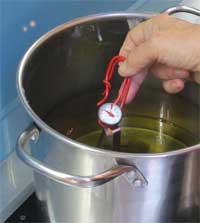
- make your skin soft and smooth
- have a gorgeous lather
- and… not be outrageously expensive!
Creating a recipe
Every vegetable oil has a distinctive fatty acid profile, and each has its benefits for making CP soap.
But make sure the backbone of your bar is tried and true. Go Native’s basic soap recipe contains
1/3 coconut oil – a saturated oil high in lauric and myristic acids
1/3 palm oil – Go Native’s palm oil is organically grown and sustainably produced
1/3 olive oil – pomace is cheapest, and paradoxically is great for soapmaking
Change just one thing at a time, so you know what’s going on. For example, if you want to produce a soap bar that’s not too soft with good lather, replace part of the olive oil with something else.
With every change remember to check the lye calculator to make sure you have the sodium hydroxide and water percentages correct.
Many oils that are nourishing when applied directly to the skin (such as jojoba, kiwiseed and borage) lack a conditioning effect in soap, and need to be balanced with an oil that provides this. Castor oil would be a good choice.
Fatty acid profiles for soap oils
Below is a table of oils, with the amounts of the fatty acids important for soapmaking, to help you create a combination of oils with the properties you seek.
Some oils stand out for their special qualities in soap (** in the table), and a few stand out because of their unusual fatty acid profiles (+ in the table).
Coconut oil ** and +
This has between 44% and 52% lauric acid and 15-25% myristic acid, both of which make a hard bar that is good for cleaning and has a great lather. But it’s low on the conditioning fatty acids, so a soap bar made only with coconut oil tends to dry the skin.
Palm oil **
This is also a very useful basic oil for soap, with its high palmitic acid content helping to give a hard bar with a stable lather, and 35-45% oleic acid giving it conditioning qualities.
Olive oil **
Soap made with just olive oil (called castile soap) has been a luxury item for millennia. It’s great for conditioning, as it’s high in oleic acid. But it’s only medium in iodine, which means it’s only medium for hardness. An olive-oil-only soap disappears quickly because of its softness, and has almost no lather.
Castor oil ** and +
The only oil with ricinoleic acid, which gives a wonderful conditioning effect. It is 80-90% ricinoleic acid. This also helps give a fluffy, stable lather – but too much will give you a sticky, soft soap.
Meadowfoam oil +
This is mainly three unusual fatty acids: 13% erucic, 18% brassic, and 62% gadoleic.
Pomegranate seed oil +
Pomegranate oil is nearly 80% punicic acid, which is named after the pomegranate - punica - and is a valuable skincare oil.
|
# Iodine Value is a measure of the saturation of an oil or fat (how many centigrams of iodine can be dissolved in a gram of oil or fat). Saturated fats have low iodine values, and unsaturated fats have high iodine values. In general, oils with low iodine values make harder soaps and oils with high iodine values make softer soaps.
Under 50: low
51 -100: medium
101 - 125: medium high
Over 125: high
Note that there are a few oils that are extremely high (blackcurrant, hempseed, kiwiseed, rosehip) or extremely low (coconut).
The SAP value of an oil tells you how much sodium hydroxide is needed for saponification.
These values are built into our lye calculator - enter the amount of each oil, and it will calculate the amount of sodium hydroxide required.
Fragrance
Both essential oils and fragrance oils can give wonderful-smelling soap. It takes more than you'd use for the same volume of moisturiser - as a rule of thumb we use 20ml per kg, but you can use more if you like.
A word of warning: Some oils react when added at trace, and the soap "seizes" - sets very quickly indeed! Read more on our blog (you may have to scroll down).
Here's an interesting recipe to try, or to stimulate your imagination!
This is a very masculine smelling soap, not everyone's cup of tea, but our family likes it.
We also like peppermint soap and star anise soap . . . so you choose whether you will like it or not!
The recipe fits our loaf mould.
240g coconut oil
240g organic palm oil
240g pomace olive oil
240g water
104g sodium hydroxide
The following essential oils:
15g cassia
10g cumin
5g clove bud
5g petitgrain
5g lavender
See our website for instructions.
We love making soap, and find the process endlessly fascinating. We love using our soap, too. We're convinced that washing with pure CP soap is a great way to maintain healthy, vibrant skin! Use a cotton facecloth for gentle exfoliation, and afterwards maybe smooth on a little light organic oil - rosehip, almond, or whatever your current favourite is. Enjoy!
Freight update
Freight is free on all orders over $120 - even if you live in the remotest parts of the South Island.
For orders under $120 you just pay $7.70 freight.
Island dwellers: Depending on the size of your order, freight may be too expensive to use couriers, so we are taking your orders to the Post Shop on Thursdays. So order early in the week for quickest arrival.
 |
That's it for this time! Summer is coming! If you haven't already, visit us on Facebook! Best wishes Elinor, Chelsea and Jacqui |
